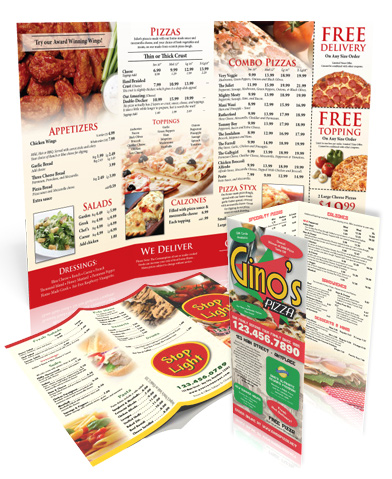7 Things Every Pizza Menu MUST Include
Pizza is one of the most beloved foods in America — generating tens of billions of dollars in annual sales. The average person eats 46 slices of pizza per year!
From Europe to America, to Asia and Africa, it has become a food that people have come to love and enjoy. The variety and ingredients may vary, but there are certain things that make pizza what it is, and even with the thousands of varieties worldwide, there certain elements every pizza should contain.
Check out the 7 thing every pizza menu must include:
List of Toppings
You should have a variety of toppings that people can choose from, for two reasons. First, toppings enable customers to customize their order, exactly the way they prefer, which will lead to increased order volume. Secondly, your toppings are the ultimate up-sellers. When it comes to increasing average ticket sizes, a focus on toppings can lead to order increases ranging from $1 to $10 per order (depending on your price points and customer preferences). In the U.S. popular toppings range from pepperoni (the most popular), to fruits (pineapple), and even various cheese varieties — the sky is the limit.
Pricing (Used Correctly)
Every menu must have clear, easy-to-read pricing for all items and options. That said, your menu should never draw attention or shift focus onto the prices. Where possible, do not use “$” signs or a price list format as you want the customers’ focus to be entirely on the food. This will enhance their hunger and potentially drive larger sales numbers. Once the customer is set on ordering your delicious food, price becomes less of a factor.
Pizza Sizes & Options
Each menu should have at least three different sizes of pizza to fit the needs of consumers (Personal, Medium, Large). The idea is to cast the widest net possible (for customers) while offering enhanced value by pizza size. For example, a medium pizza that costs $12.99 provides an up-sell opportunity with a more profitable large pizza for $14.99. At the same time, you need to think about your customer demographic and based your pizza sizes and option around them. If your average customer is a family, you may want to include an X-Large pizza and list how many slices are included with each pizza size. This will help your customers make the right decision, quickly.
List of Ingredients
It is important to have the ingredients of the pizzas listed on your menus for a number of reasons. First, you need to ensure that people know what they will be eating, for both nutritional and health reasons (ie: food allergies). Secondly, if you use high-grade ingredients, you can justify your pricing more easily. For example, you may be able to charge more per pizza when using a top-grade cheese blend with garden fresh (or imported) premium ingredients.
Promotional Offers
You can offer discounted rates, combo deals, free breadsticks — get creative but make sure you maintain your required profit margins. In virtually every industry, coupons and offers are the driving mechanism for sales. The old saying, “Even the best pizza doesn’t sell itself,” is very true. Give people a reason to call, click, or visit to increase sales. How you do it, is entirely up to you.
Delivery, Takeout Options
You need to include contact and delivery options at the bottom of the cover of your menu. Consumers tend to look at the cover of your menu for ordering options, so make sure you include these options in the right place. Always include your phone number, address, delivery options, payment options, and website (where applicable). Ordering from your business should be “easy as pie.”
A little bit about your business
What sets your business apart from others? Who are you, what is your history? Do you have any specialty items that no other restaurant provides? A small write-up on the back of the menu (signed by the owner!) thanking customers for the patronage and sharing your story is a good idea. Business is all about connecting and growing.
Now that you know how to create the perfect pizza menu, it’s time to design, print, and mail your menus to every local home. There is simply no substitute for having your menus inside every local home — especially when it comes to fighting off competitors and gaining market share.

